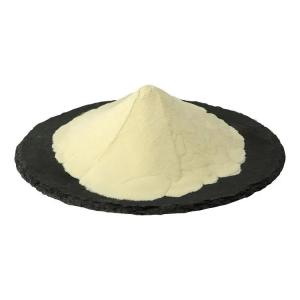News list
News Center
Hot Product
News
The connection between phosphoric acid and nutrient systems
Time:2025-10-14
1. Introduction
Phosphoric acid is a vital inorganic compound that plays a central role in both biological and agricultural nutrient systems. As a key source of phosphorus, it contributes to essential processes that sustain plant growth, food production, and cellular metabolism. Its versatility and reactivity make it an integral component in the global nutrient cycle.
2. Chemical Characteristics and Formation
Phosphoric acid (H₃PO₄) is a colorless, odorless, and moderately strong acid derived primarily from phosphate rock through chemical or thermal processing. Its ability to release hydrogen ions and form phosphate ions under various conditions enables it to interact dynamically with other nutrients, forming compounds that are stable and bioavailable in different environments.
3. Role in Plant Nutrient Systems
In agricultural systems, phosphoric acid serves as a precursor to phosphate-based fertilizers such as monoammonium phosphate (MAP) and diammonium phosphate (DAP). These fertilizers supply phosphorus, an essential macronutrient responsible for root development, energy transfer, and crop productivity. Phosphoric acid ensures the conversion of insoluble phosphates into plant-accessible forms, thereby supporting sustainable soil fertility management.
4. Involvement in Biological Energy Systems
Within living organisms, phosphoric acid derivatives form the foundation of many biochemical processes. It contributes to the structure of adenosine triphosphate (ATP), the molecule that stores and transfers energy in cells. Additionally, phosphoric acid participates in the formation of nucleic acids and phospholipids, which are essential for genetic material and cell membrane integrity.
5. Environmental and Industrial Integration
Phosphoric acid connects natural nutrient systems with industrial processes through its use in fertilizers, food additives, and cleaning agents. Its production and application must be carefully managed to minimize environmental impacts such as eutrophication. The recycling of phosphorus from waste streams and sustainable acid management are emerging approaches to balance nutrient demands with ecological protection.
6. Conclusion
Phosphoric acid stands at the intersection of chemistry, biology, and ecology. Its role in nutrient systems—spanning from cellular energy metabolism to large-scale agricultural production—demonstrates its indispensable importance in sustaining life and supporting global food security. Future developments in phosphorus recycling and green chemistry are expected to enhance the efficiency and sustainability of phosphoric acid utilization within nutrient networks.
Phosphoric acid is a vital inorganic compound that plays a central role in both biological and agricultural nutrient systems. As a key source of phosphorus, it contributes to essential processes that sustain plant growth, food production, and cellular metabolism. Its versatility and reactivity make it an integral component in the global nutrient cycle.
2. Chemical Characteristics and Formation
Phosphoric acid (H₃PO₄) is a colorless, odorless, and moderately strong acid derived primarily from phosphate rock through chemical or thermal processing. Its ability to release hydrogen ions and form phosphate ions under various conditions enables it to interact dynamically with other nutrients, forming compounds that are stable and bioavailable in different environments.
3. Role in Plant Nutrient Systems
In agricultural systems, phosphoric acid serves as a precursor to phosphate-based fertilizers such as monoammonium phosphate (MAP) and diammonium phosphate (DAP). These fertilizers supply phosphorus, an essential macronutrient responsible for root development, energy transfer, and crop productivity. Phosphoric acid ensures the conversion of insoluble phosphates into plant-accessible forms, thereby supporting sustainable soil fertility management.
4. Involvement in Biological Energy Systems
Within living organisms, phosphoric acid derivatives form the foundation of many biochemical processes. It contributes to the structure of adenosine triphosphate (ATP), the molecule that stores and transfers energy in cells. Additionally, phosphoric acid participates in the formation of nucleic acids and phospholipids, which are essential for genetic material and cell membrane integrity.
5. Environmental and Industrial Integration
Phosphoric acid connects natural nutrient systems with industrial processes through its use in fertilizers, food additives, and cleaning agents. Its production and application must be carefully managed to minimize environmental impacts such as eutrophication. The recycling of phosphorus from waste streams and sustainable acid management are emerging approaches to balance nutrient demands with ecological protection.
6. Conclusion
Phosphoric acid stands at the intersection of chemistry, biology, and ecology. Its role in nutrient systems—spanning from cellular energy metabolism to large-scale agricultural production—demonstrates its indispensable importance in sustaining life and supporting global food security. Future developments in phosphorus recycling and green chemistry are expected to enhance the efficiency and sustainability of phosphoric acid utilization within nutrient networks.


 CN
CN





